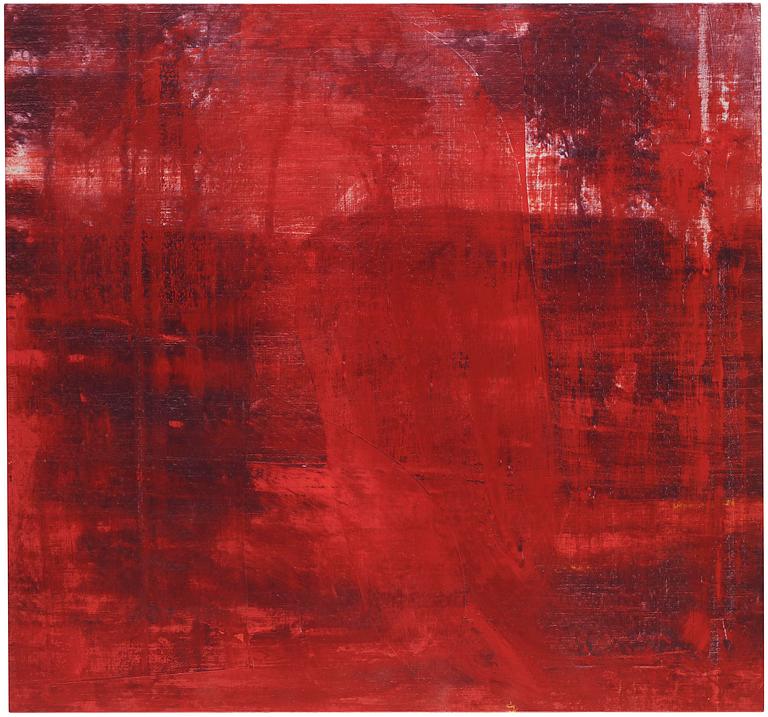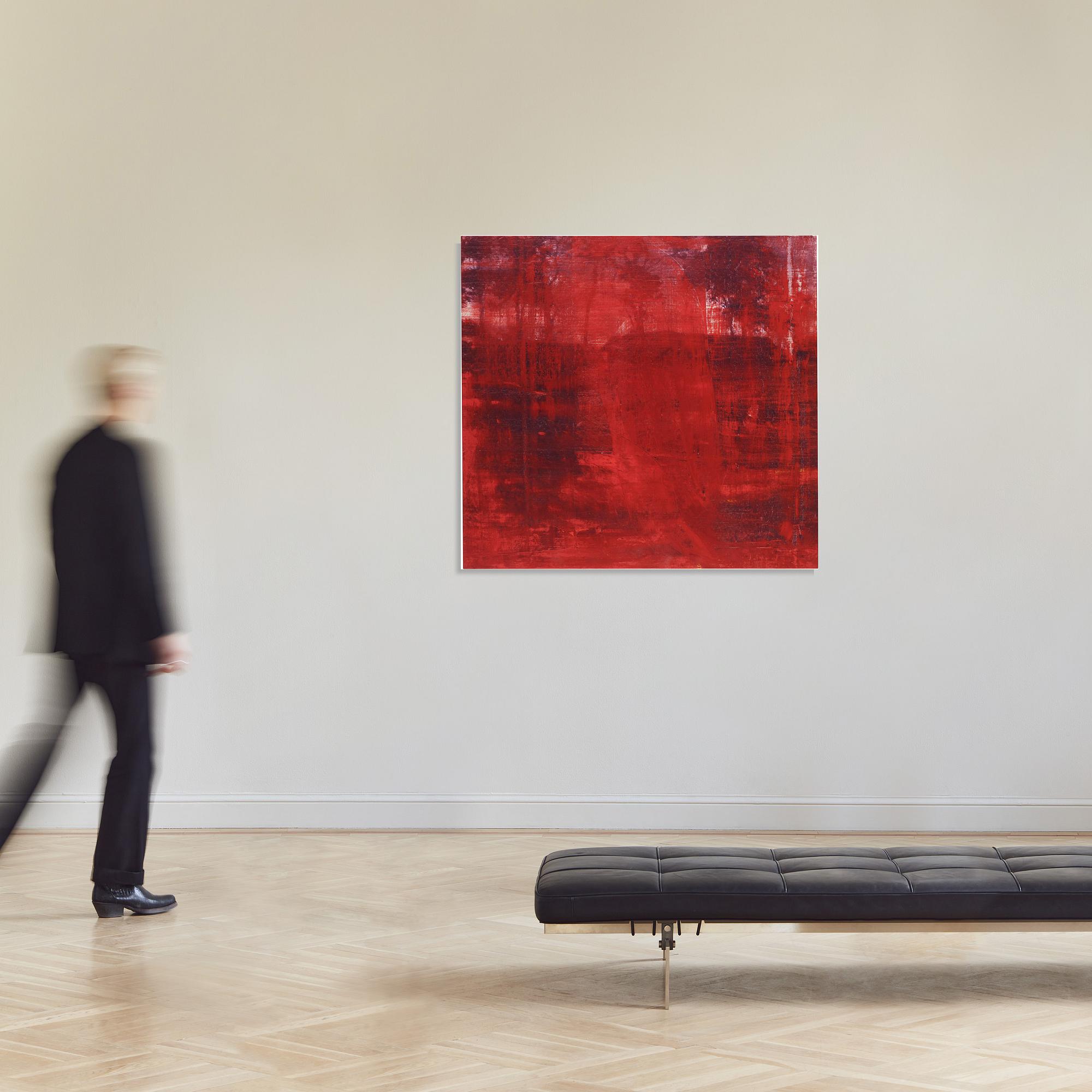Ola Billgren
"Återblick"
Signed Ola Billgren and dated -97. Oil on canvas 150 x 161 cm.
Provenance
Private Collection, Sweden.
More information
In Ola Billgren's painting “Återblick” from 1997, the artist's interest in detailed photorealism from the 1960s is intertwined with an emotional intensity that characterized his red period from the 1990s. The crimson hue of the painting becomes a means of expression that contains both life-giving warmth and intense feelings of conflict and aggression. Billgren believed that the colour red had a unique ability to reflect the complex emotional life of human beings, an ability that few other colours could match. In ”Återblick”, this colour is used not only to depict a specific scene, but to evoke a sense of something past and present at the same time, where the depth of the red colour creates an atmosphere of both closeness and distance.
Billgren's creative process is itself a unique combination of technical and artistic methods. He began by carefully painting a photographic image, and then used a squeegee to scrape away parts of the subject. This process, similar to slow development in photography, causes the image to lose its clarity and merge with the colour. In “Återblick”, this results in a landscape that appears diffuse and dissolved, with every detail fading into soft layers of red, giving the painting an almost dreamlike quality.
In the auction's painting, the colour red plays a central role in creating both visual depth and emotional resonance. “Återblick” is a journey through time and emotions, where the artwork not only reflects a past landscape, but also makes us think about how we relate to the irrevocable flow of time.
Artist
Ola Billgren was born in 1940 in Copenhagen but based his career in Sweden. Billgren was self-taught, having only been trained by his parents Hans and Grete Billgren. Ola worked within the mediums of graphic art, watercolour, collage, photography, film, and scenography. He was also an author and culture critic. Known for his versatility, Billgren cultivated a relationship between art and reality in his work.
During the 1960s, he transitioned from abstract expressionism to photographic realism. Over time, his paintings evolved into a fusion of abstract and photorealistic styles, resulting in romantic landscapes where he examined the interplay of light and color. Forms dissolved, and colors were reduced to monochrome, single-colored surfaces that were richly worked and varied.
In the late 1980s, he returned to urban environments in large cityscapes, often painted from a high perspective but maintaining the impressionistic approach seen in his landscapes. Ola Billgren's influence on recent decades of art has been significant. His work is represented in institutions such as Musée National d'art Moderne Centre George Pompidou in Paris and Moderna Museet in Stockholm.












































